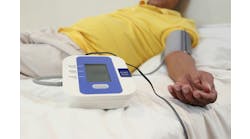A fall 2022 survey conducted at 15 academic medical centers put specific numbers on a problem facing hospitals across the country: the time some patients spend awaiting discharge from the hospital is contributing significantly to hospital length of stay.
One of the participants in the study is the University of Nebraska Medical Center. In a statement, Chad Vokoun, M.D., chief of the University of Nebraska Medical Center Division of Hospital Medicine, said that on any given day at Nebraska Medicine’s main hospital, the Nebraska Medical Center, “we have upward of 60 patients waiting for placement.”
“Medically ready for discharge” means that the patient is clinically considered an appropriate candidate to move to a lower level of care. Barriers to discharge might include requiring daily living support services or skilled therapy.
A study of the issue was recently was published in the Journal of Hospital Medicine. Of 1,928 patients sampled, 35 percent were medically ready for discharge, including 9.8 percent with major discharge barriers. Many patients with major discharge barriers (44.4 percent) had spent a month or longer medically ready for discharge and commonly (84.1 percent) required some form of skilled therapy or daily living support services for discharge.
The greater length of stay can lead to inefficient use of resources, patient safety issues, provider and staff burnout, and a decrease in hospital capacity. “Because those beds are occupied,” Vokoun added, “we have to turn patients away that we can possibly help.” Transfers from other hospitals are denied. Surgeries are delayed.
Higher proportions of patients experiencing major discharge barriers were found in public versus private, nonprofit hospitals (12 percent vs. 7.2 percent) and county versus non-county hospitals. These hospitals tend to have the most medically complex patients, Vokoun explained. Finding the next landing spot for them is difficult.
The study’s authors suggested “health systems, clinicians, patients, external health resources (e.g., skilled nursing facilities, home health agencies, etc.), communities, local and state governments, as well as payors,” should brainstorm solutions. “Initiatives should emphasize development of community or payor‐funded transitional care programs, targeted financial and structural changes that focus on the medically complex population, as well as strategic partnerships to remove bureaucratic, administrative, and legal delays.”
Vokoun said that a partnership with Douglas County Health Center has been crucial in placing some patients. Workforce development efforts today also could help someday down the road. But, “I don’t pretend to have the solutions. Even if I had a magic wand, I don’t know where I would wave it,” he said. “Just like the problem is multifaceted, the answer will be multifaceted.”


